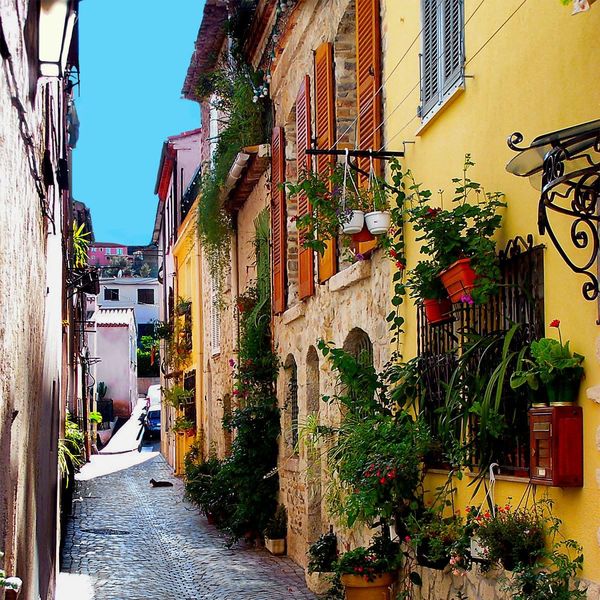Saint-Laurent-du-Var is a place of transit and passage commanding the crossing of the Var, a particularly capricious Alpine river, and has suffered the hazards of this singular geographical and strategic situation which has profoundly marked its history.
Epidemics, wars, invasions and floods have punctuated the different stages in the formation of Saint-Laurent-du-Var over the centuries. The inhabitants moved along the right bank of the Var, without ever crossing it, before taking root towards the end of the millennium.
The Old Village has two main building periods. The first dates from the Middle Ages (11th and 12th centuries). During these great periods of insecurity, Saint-Laurent was built on a dominant point, easy to defend, with the church as its central and culminating landmark.
Following the various disasters that occurred between the 12th and 15th centuries, the village became depopulated and abandoned. It was necessary to call upon Italian immigration from nearby Liguria and Saint-Laurent-du-Var was reborn under its influence. The constructions then took into account the natural elements of water, wind and sun. The principle of "calandage" (the creation of lateral or central trenches), which can still be seen in the rue Raphaël Monso, began to be used for the evacuation of rainwater; the construction of streets and squares favoured shade. The new Saint-Laurent is presented in the form of a checkerboard plan with streets that intersect at right angles; it represents a rectangle and integrates the previous constructions. The materials used are large rolled pebbles from the bed of the Var for the walls, street pavements and ramparts, and thin red bricks for the vaults, frames and doorposts.
Typical houses from this period (honey-coloured, bumpy walls with pebbles standing out against the dark bond) can still be seen in the Rue des Remparts and one at the western end of the Rue du Var with a watchtower. Houses were generally built on three floors: a ground floor, which was the stable or cellar, the first floor, where people lived, and the attic, which was used as a barn, storehouse or drying room. Because of the narrowness of the streets and the limited number of windows, the interior of the houses was very dark.
During the following centuries, changes due to the demographic progression took place: houses were raised, attics were transformed into rooms or fruit drying rooms, doors were enlarged to allow larger objects to pass through... Some of these doors were sometimes transformed again later on. The successive hangers are still visible on some houses in the village.
It was only in the 18th century that construction was carried out outside the ramparts: a few mills and sawmills along the river and in the Pignatières district. But this development remained minimal because of the insecurity linked to the proximity of the border.
The coat of arms
The first trace of the Saint-Laurent-du-Var coat of arms dates back to 1866 in Louis de Bresc's "L'armorial des Communes de Provence".
Its coat of arms is as follows: Gules, a silver grill, the handle in chief between capital letters L and S Or.
The current emblem of Saint-Laurent-du-Var is virtually identical to its ancestor: a silver grill on a red background, with the letters L and S in gold. However, two elements have been added: the Croix de Guerre à l'Ordre de l'Armée, for the contribution made by the population and the participation of its resistance group in the Liberation. The grill recalls the martyrdom of Saint-Laurent who, according to legend, was burnt alive. The letters L and S stand for Laurentius Sanctus (Saint-Laurent). They are underlined by the proud Provençal motto "Digo li qué vengon" ("Tell them that they are coming"), a sort of bravado linked to its former position as a border town.
The historical tour of the Old Village:
Come and discover the Old Village with your family independently and at any time thanks to the 11 explanatory panels. For a more entertaining version, the panels are accompanied by the e-balade application, which can be downloaded free of charge from your smartphone's download platform. This tour is accessible to people with reduced mobility.
Furniture
- Exhibition space
- Parking nearby









